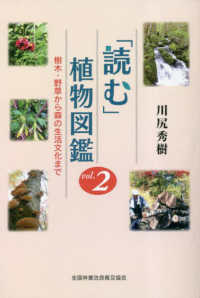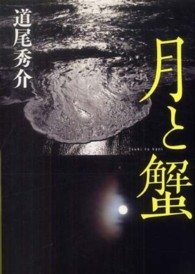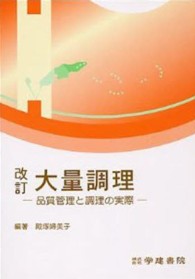- ホーム
- > 洋書
- > 英文書
- > Science / Mathematics
Full Description
This two volume guide provides a comprehensive overview of the fundamental principles and guidelines for documenting cultural heritage places. It seeks to aid heritage managers and decision makers in understanding their roles and responsibilities inn this essential activity. Volume 1 (Guiding Principles) explains why heritage managers must make sure that heritage information fully integrated into all research, investigation and conservation activities. Through the discussion of basic principles, benefits and new approaches, it assists those in charge of preserving immovable cultural heritage by bringing current heritage information practices to a new level. By recording we create a reference for evaluating change and add to the understanding of a site. By documenting we guarantee that information is systematically collected and preserved for future use. By managing the information we make it available and provide a basis for sharing our knowledge and understanding. Volume 2 presents illustrated examples from around the world. Good documentation of a site allows for better understanding of the site's value. Recognizing value and significance is often the first step toward a site's eventual conservation. The information obtained through the documentation process allows conservation professionals to record current conditions, consider appropriate conservation options, plan interventions, apply treatments, and finally, measure the results of their efforts. Documentation can be a tool in resolving a conservation issue. This volume presents several illustration examples from around the world, in various stages of conservation.
Contents
Part 1 Background; Chapter 1 How did this book come about?; Part 2 Overview; Chapter 2 What are we talking about?; Chapter 3 Why is heritage information required?; Chapter 4 When is recording indispensable?; Chapter 5 Who is producing information, and who is using it?; Part 3 Guidance; Chapter 6 How does heritage information fit into the conservation process?; Chapter 7 Why recording, and who produces records?; Chapter 8 What approach is suggested to ensure systematic documentation and good information management?; Chapter 9 How are national heritage information policies and related programs developed?;








